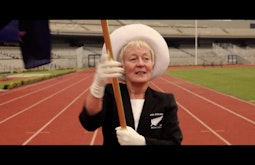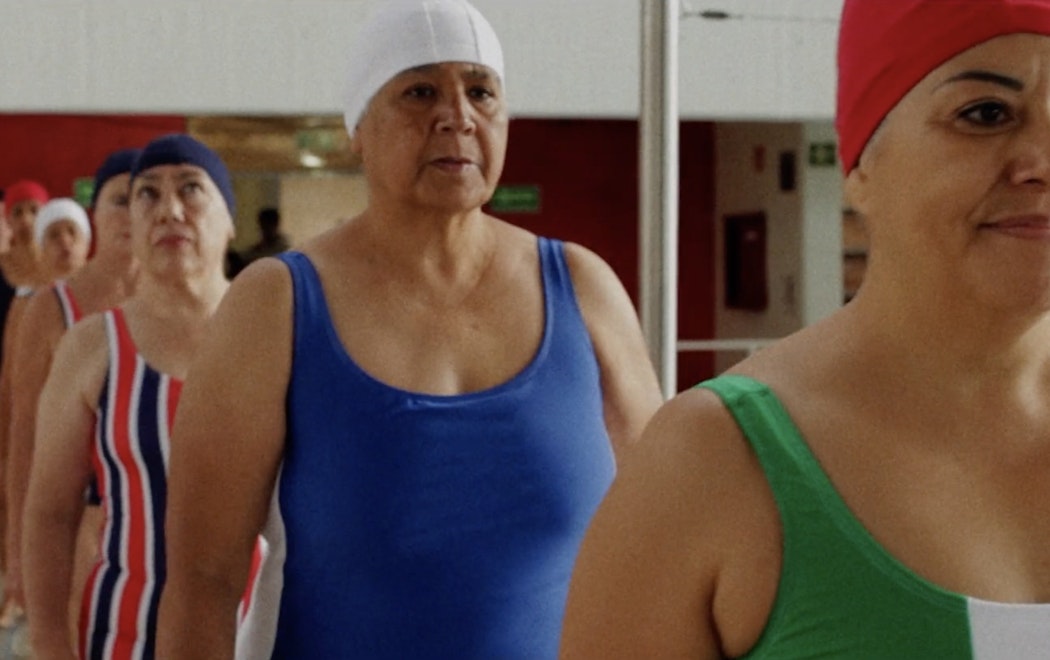"In 1970, actress Raquel Welch starred in a video in which she, a space-age Barbarella flanked by two silver-suited males, danced and gyrated in front of a collection of huge concrete modernist sculptures that had been commissioned for the 1968 Olympics. Almost fifty years later, on a very hot day in Mexico City, I squeezed myself into a tight-fitting metallic silver bodysuit and went hunting for those very sculptures. I was on my way to restage Raquel Welch’s Space-Girl Dance (1970).
One small hitch: I can’t dance. I had managed a quick half-hour lesson two days before we left New Zealand, a lesson in which I was irrefutably outdanced by a five-year-old. But nothing had quite prepared me for the mess I’d got myself into this time. This struck me with considerable force as I lurched across a crazy Mexico City highway in my silver suit.
Strutting my stuff in full view of the passing traffic, I discovered the power of a tight silver bodysuit—even one worn by an older woman. Mexican men kept tooting their car horns as they sped past, and I swear the gap between Raquel and me got a whole lot smaller. I could feel the stardom.
A distinctive flavour of parody is prefaced in Space-Girl Dance to the point of tipping my performance over into the ridiculous—however, in this work, I was interested in investigating the potential relevance and value of parody as a tool for aiding the production of incongruity within a contemporary restaging methodology."
Space-Girl Dance (2018)
Other works in this series

Sandy Gibbs
How to wear a disguise (2017)
The artist attempts to map out the spy disguise instructions of Stasi training manuals.

Sandy Gibbs
Lighting an old flame (2017)
A homage to Norma Enriqueta Basilio, the first woman to light the Olympic flame, and a celebration of the ageing female body.

Sandy Gibbs
Stadium walk (opening ceremony) (2018)
The artist strides into the Olympic stadium in Mexico and is overcome by emotion.

Sandy Gibbs
The swimmer and the spy (2017)
Part of a series of works where the artist seeks to restage a swimming race from the 1968 Mexico Olympics.

Sandy Gibbs
The swimming race (Mexico City) (2018)
The artist attempts to restage the final of the women's 400 metres individual medley from the 1968 Mexico Olympics.

Sandy Gibbs
Recalling Tui (2016)
The artist restages from memory a phone call made to their childhood hero, the swimmer Tui Shipston.
